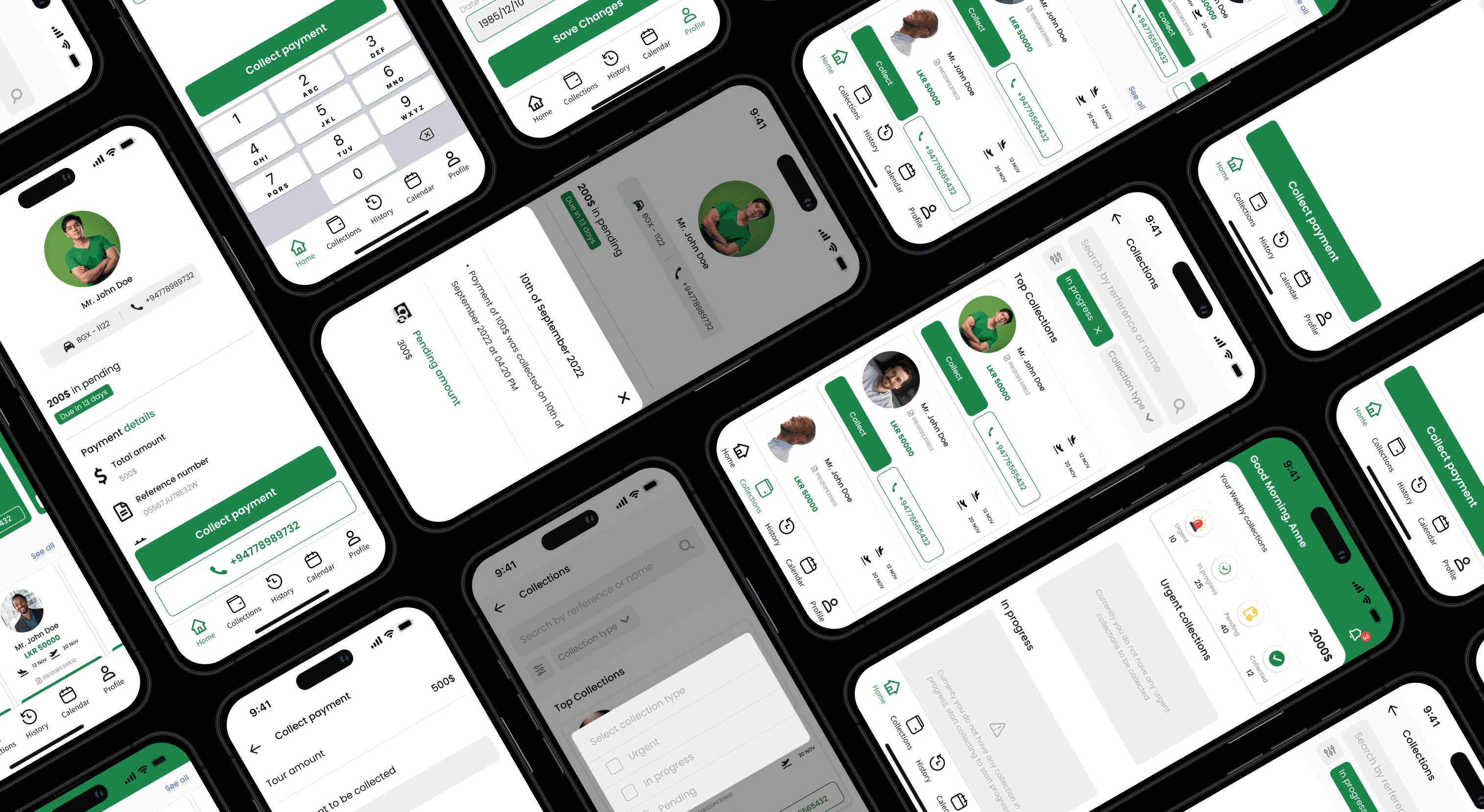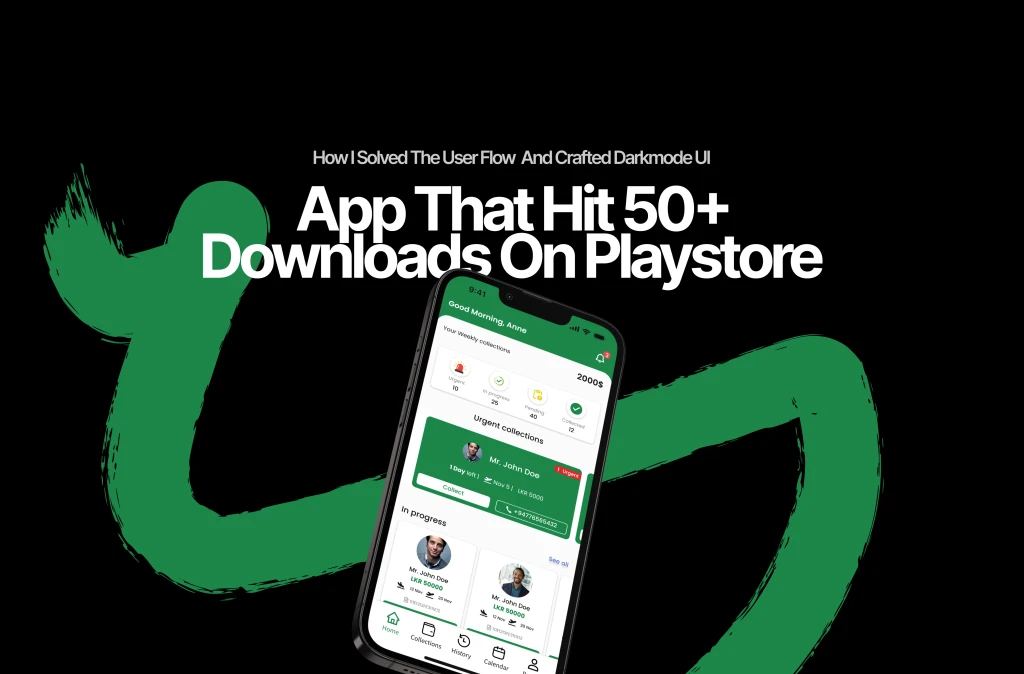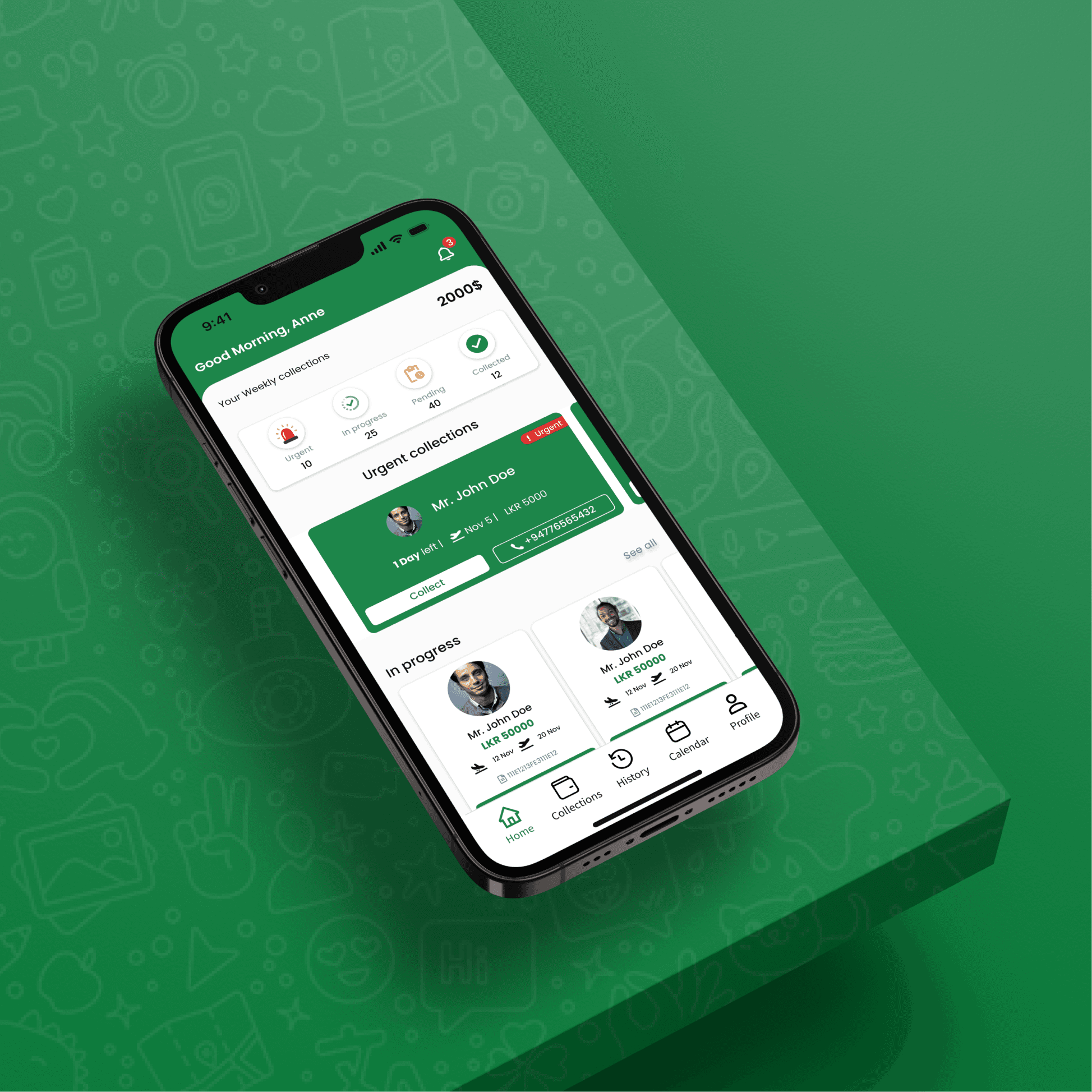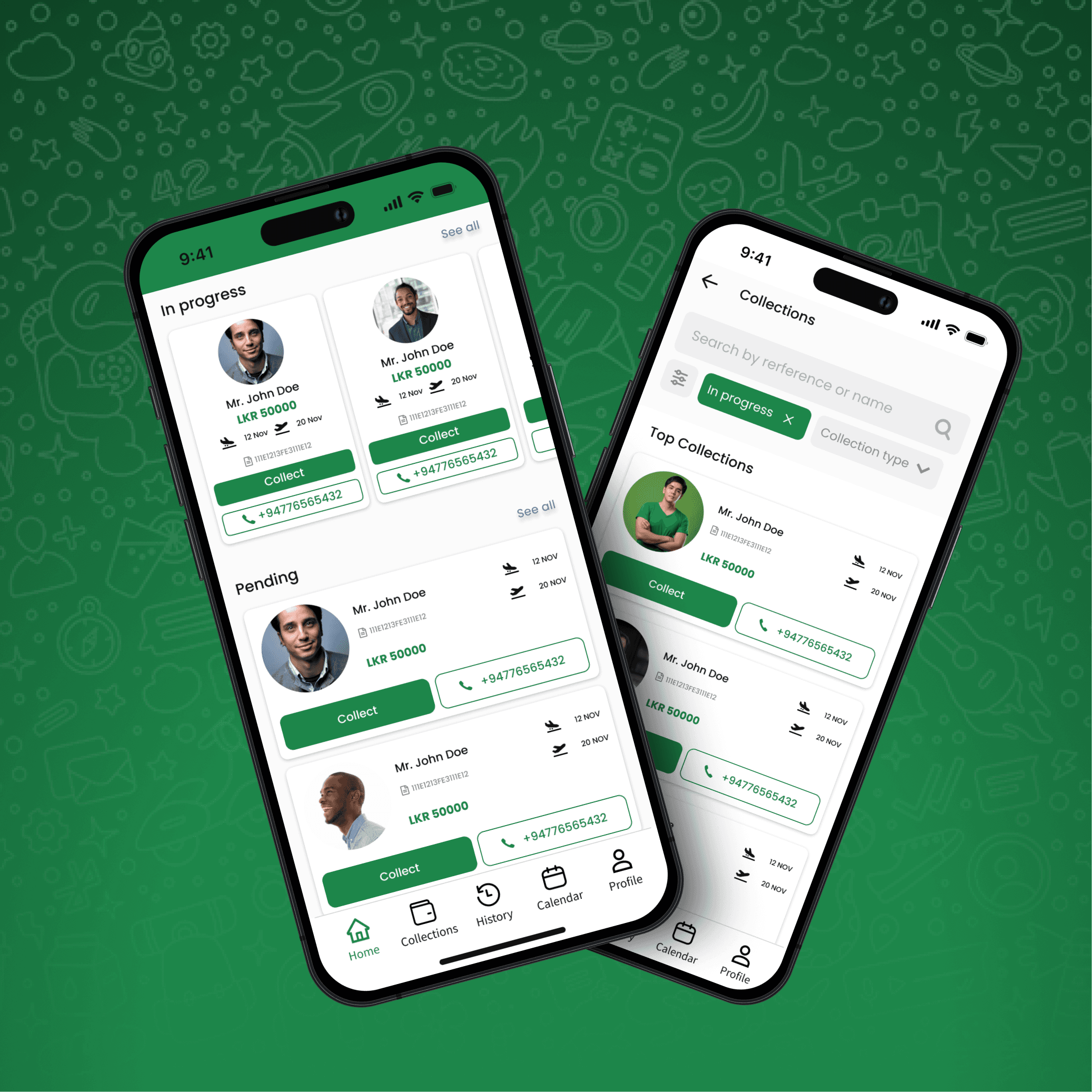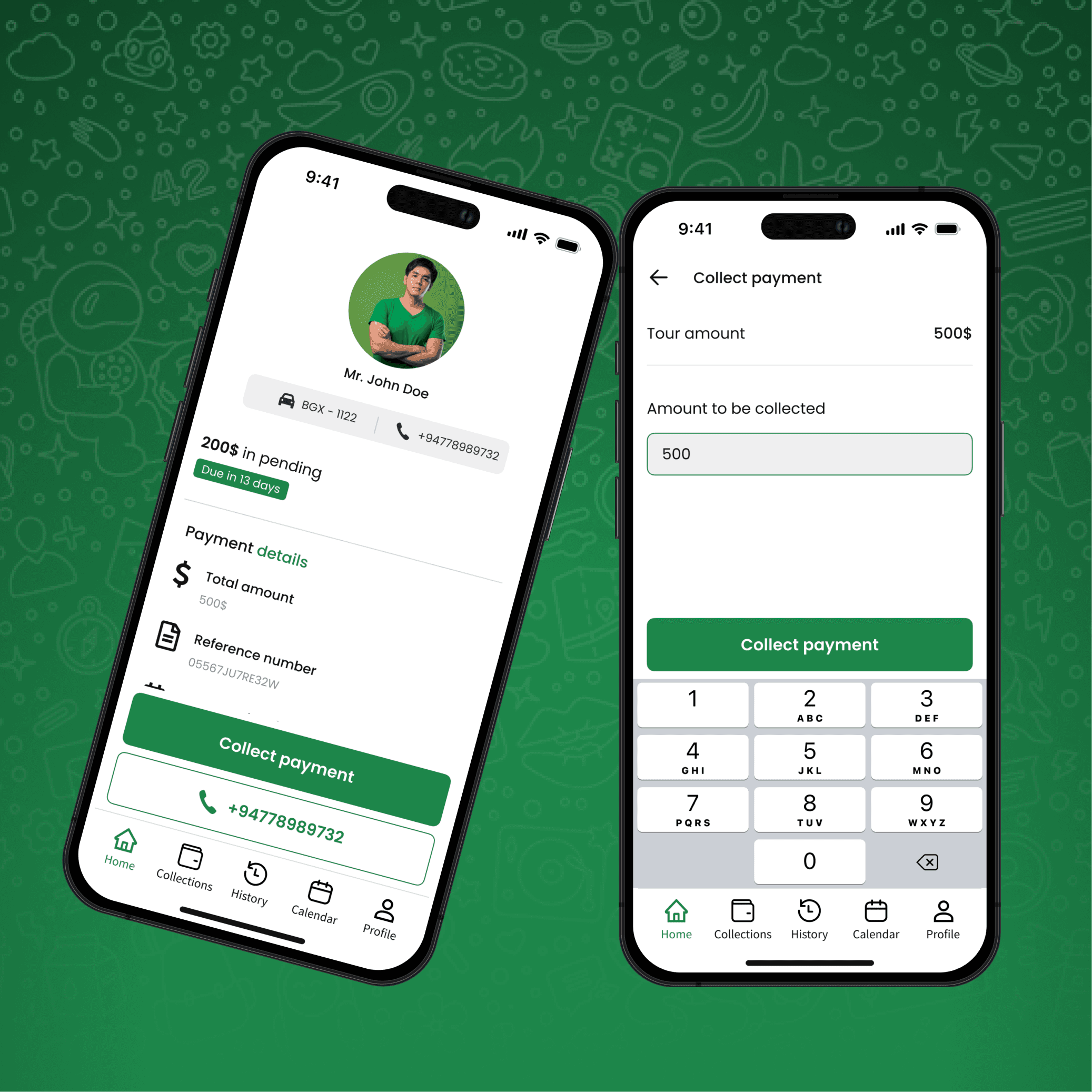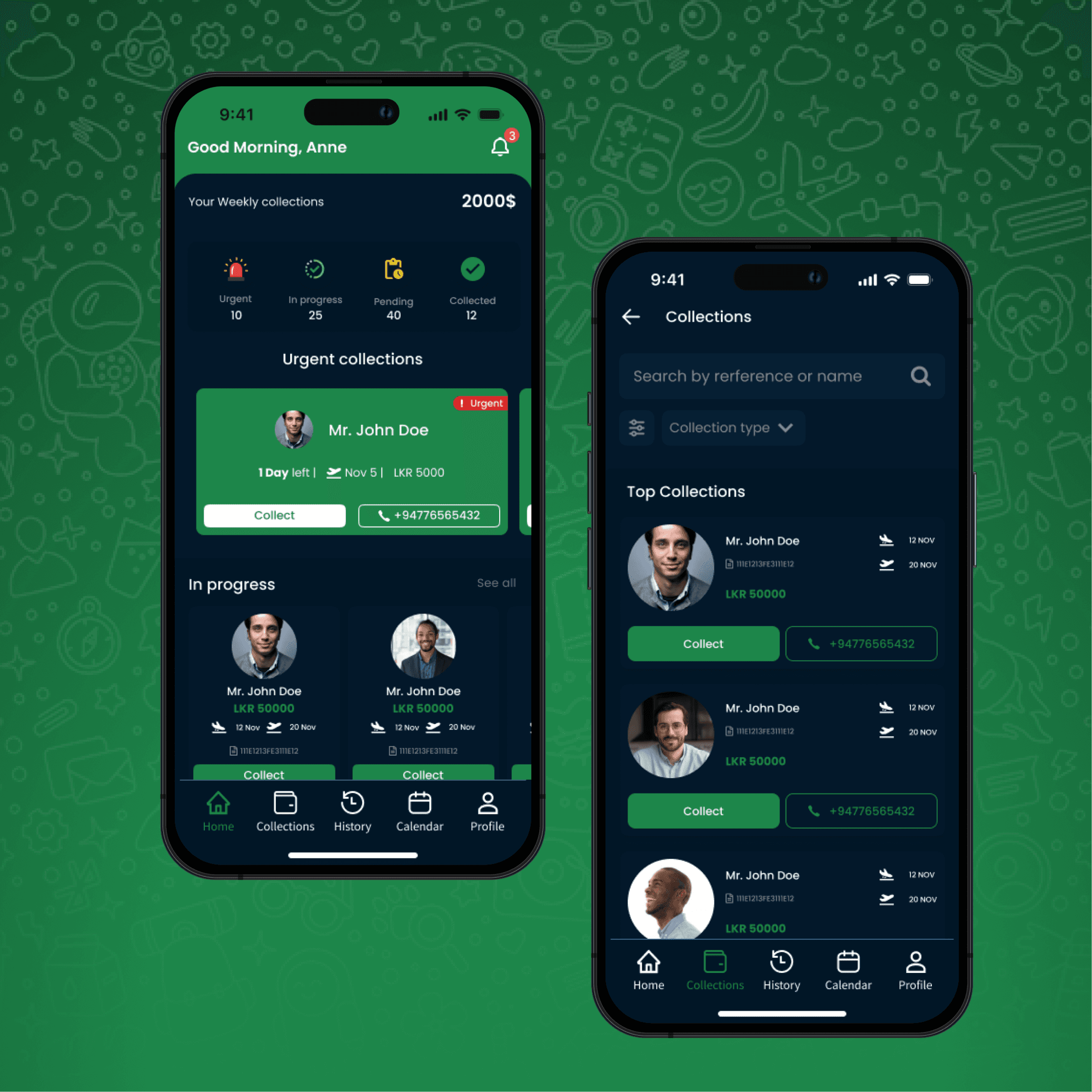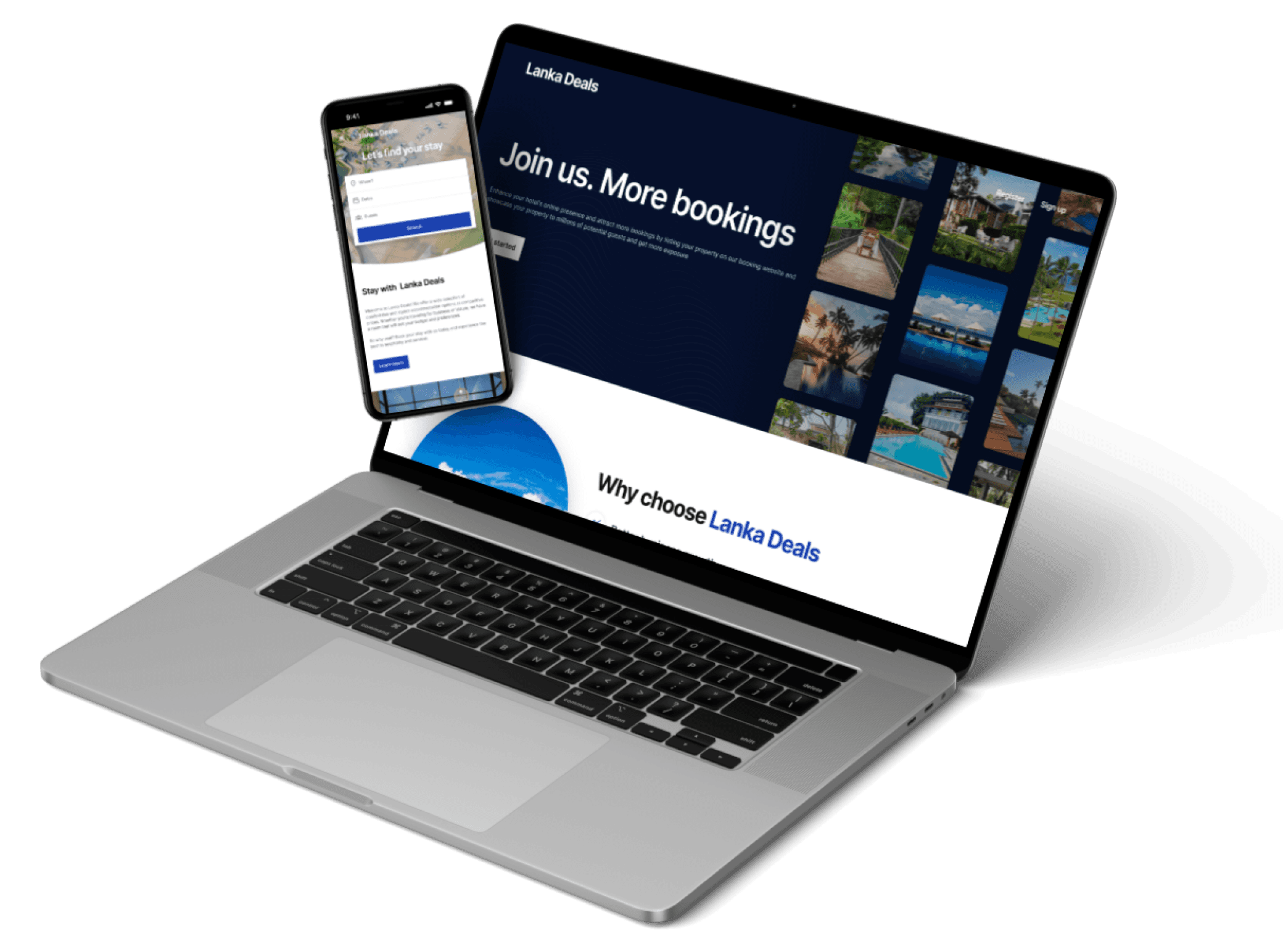Starting with the introduction
The special bond between a traveler and their guide is what makes a trip truly unforgettable. Your guide is more than just someone who helps you get around in a new place; they're like a friendly local who introduces you to the heart and soul of the destination. They're not just there to drive you; they're like a cultural ambassador, sharing stories about the area and making your journey an immersive experience.
Digital Tourism connects drivers and tourists together so that they can find a driver guide for their travels. In Sri Lanka, it is not easy to find a driver guide for travels, as they could be expensive as well. Most travelers care about the travel vehicle information about the driver. The vision is to connect independent travelers around the world.
What is the problem?
Digital Tourism facilitates driver guide bookings for tourists through social media platforms, encountering difficulties in managing reservations and coordinating with its extensive network of drivers. The current system lacks efficiency in tracking reservations, resulting in challenges in communication and the timely collection of payments from tourists.
Adding to the complexity, individual drivers are responsible for charging tourists directly, yet there is a notable absence of a streamlined notification mechanism to alert drivers about when payments should be collected. This communication gap poses a risk to the smooth financial transactions within the company.
What I am tasked with
In my role as a designer, I am tasked with crafting the second part of the application, specifically tailored for payment collectors or drivers responsible for collecting payments from travelers. While the initial driver-focused segment has been successfully designed, my focus now shifts to creating an intuitive and efficient interface for those entrusted with the crucial responsibility of handling financial transactions with travelers.
Factors and requirements to consider
There are few factors and requirements that are to be considered when designing this.
Application to be consistent
Payment collector is another part of the application, therefore the designs must be consistent and align what is already being designed.
Urgent payments to be at the top
All the payments that must be collected have a deadline. The payments that have a close deadline are urgent payments and they must be placed at the top of the screen.
Payment description screen to have collection payment and call driver options
The payment collector must have options to contact the driver and collect payment within the application track records of the payments
Designing the User Interfaces
Home screen
The home screen design prioritizes urgent payments by prominently featuring them at the top for attention. In addition to urgent payments, non-urgent payments are categorized into two main sections: "In-Progress Payments" and "Pending Payments." In-Progress Payments represent transactions that have been partially paid, while Pending Payments means to amounts that have not been collected at all. This structured layout ensures a clear distinction and easy navigation for users to manage both urgent and non-urgent payments efficiently. Down below is UIs that is designed for home screen for the user.
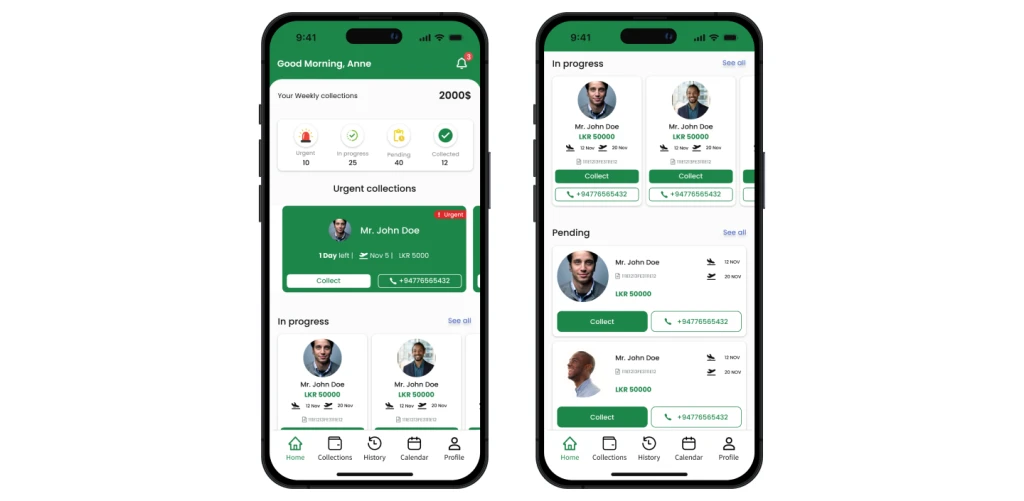
Collections screen
Collection screen displays all the collections assigned to the payment collector. They are given features sort all the collections by; urgent payments; in progress payments and pending payments.
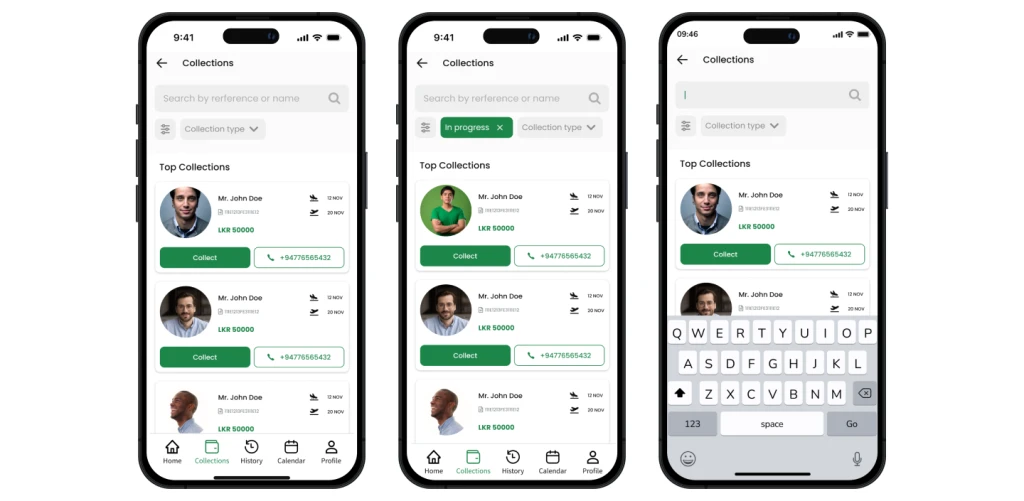
Payment screen
The Payment Details screen provides information regarding a specific payment. This screen is designed to offer convenient access for users to both collect payments and initiate a call to the designated payment collector. It ensures a seamless and efficient experience by centralizing payment-related actions in one easily accessible location.
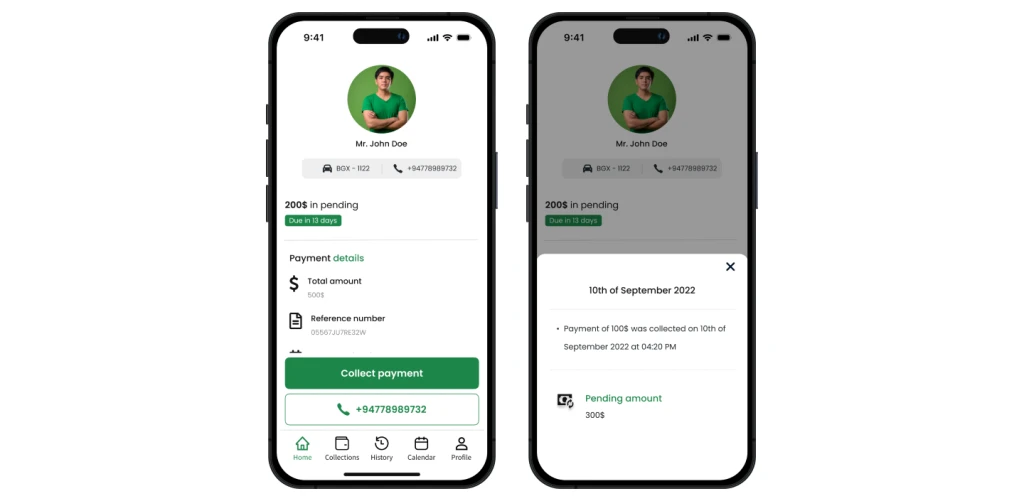
Payment collect screen
The Payment Collection screen serves as the focal point for users, particularly payment collectors, to gather payments from drivers. Initially, the screen displays the default amount in a textbox, representing the total payment due. However, the collector has the flexibility to manually adjust this amount, allowing for partial payments.
Upon adjustment, the registered amount is recorded within the system, subsequently deducting it from the total. The net amount to be collected is then displayed, streamlining the collection process and providing a clear visual representation of the transaction. This user-friendly interface ensures adaptability to different payment scenarios while maintaining accurate records within the system.
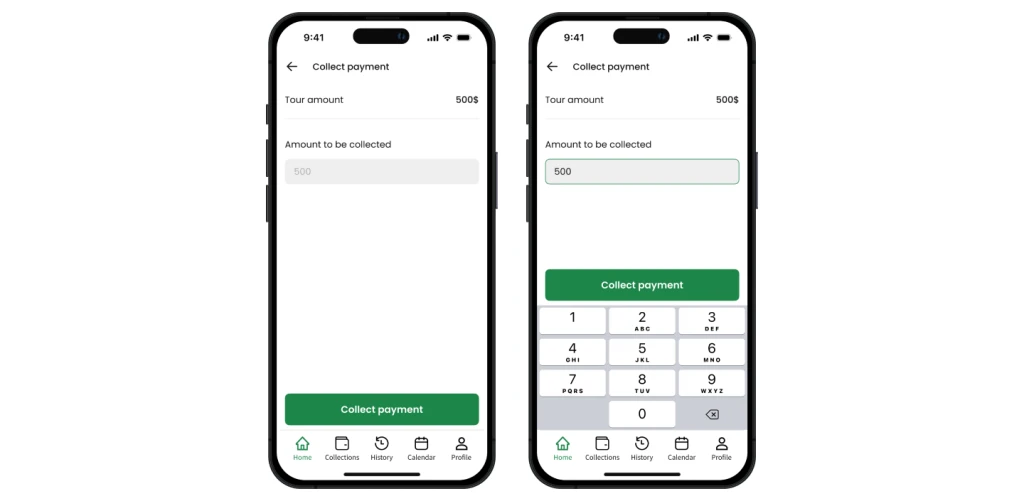
Profile screen
As a drive can be a payment collector, the user has a feature to switch profiles. User can click the profile picture and do the profile transition. As well as, they can edit their profile details as well.
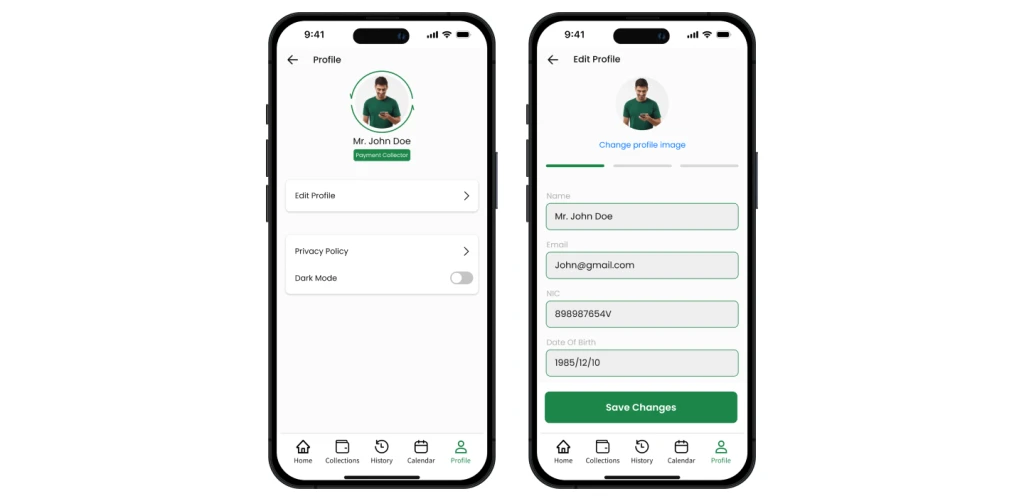
Conclusion
The conclusion is that, as the designer, I have understood and learned how to design mobile applications and keep it consistent with the design standards that are being followed. As well as improved on receiving design and feedback at the of iterations and applying them on the product for better User Experience.
